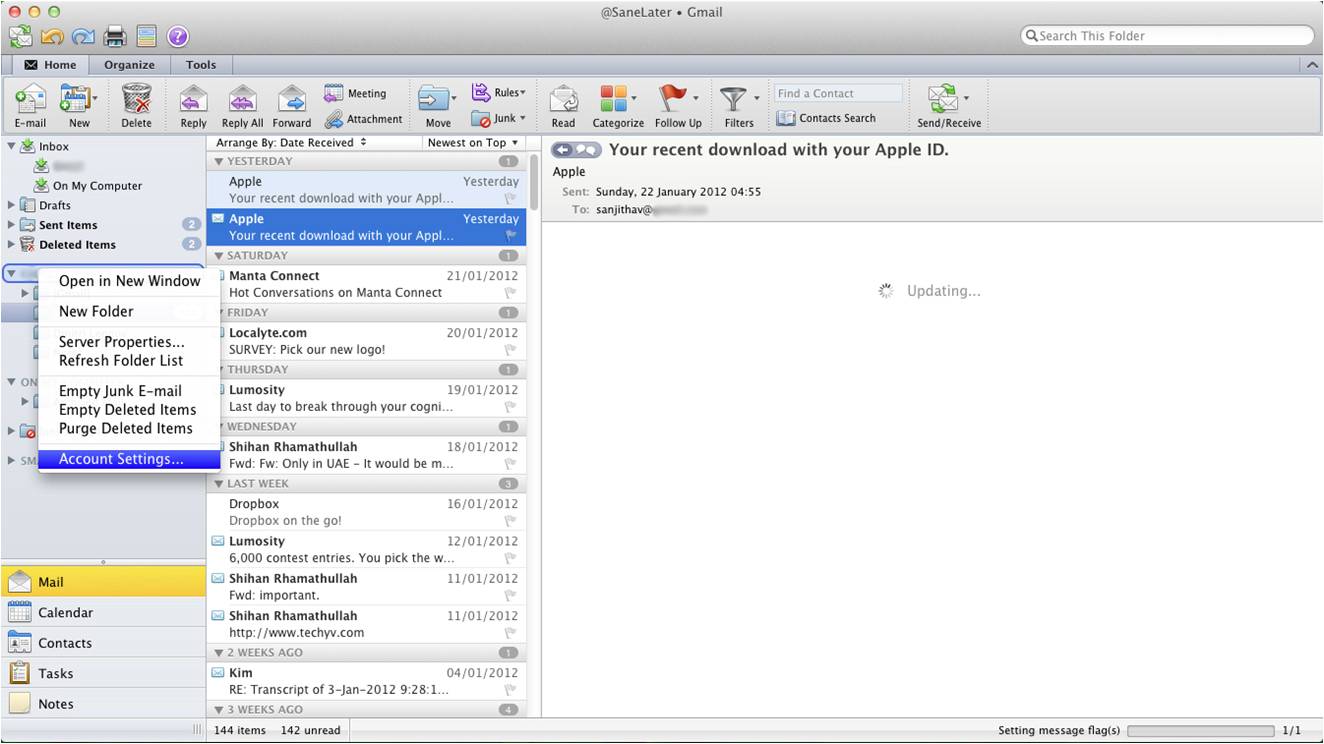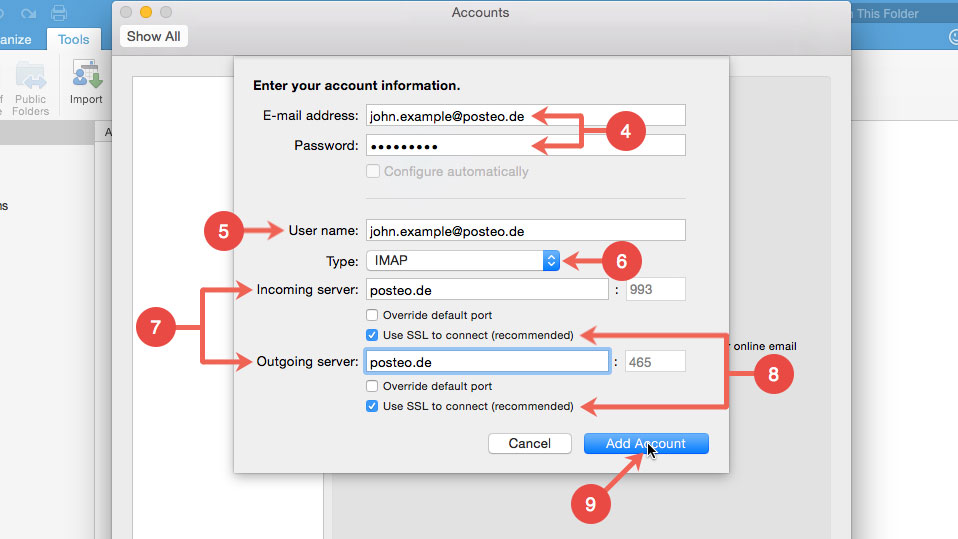

Select the Exchange email account in the left pane > Advanced to see your server address.
 On a Mac: Launch Outlook, and then select Tools > Accounts. See How do I tell if I have an Exchange account in Outlook for more information. Select your Exchange email account, and then click Change to see your Exchange server address. On a PC: Launch Outlook, and then select File > Account Settings > Account Settings. If you have Outlook running on a different computer, you can try looking there for your server name. A green indicator next to the account name means the account is connected. When the you’ve finished adding the account, it appears in the left pane of the Accounts box and Outlook begins downloading your messages and other items. You’ll only be prompted for the sign-in once. You’ll be asked to sign in to your Office 365 account via your organization’s sign-in page. This enables additional layers of security such as multi-factor authentication. For Office 365 accounts, modern authentication is now supported. If so, check Always use my response for this server > Allow. Outlook will detect your Exchange server automatically.If you’d rather enter your Exchange server name manually, clear the Configure automatically check box, enter the server name, and click Add Account. Enter your user name and password for Exchange, and click Add Account. To create a new ID, click Create a New ID.Ĭlick Client Certificate Authentication, and select a certificate from the pop-up menu.
On a Mac: Launch Outlook, and then select Tools > Accounts. See How do I tell if I have an Exchange account in Outlook for more information. Select your Exchange email account, and then click Change to see your Exchange server address. On a PC: Launch Outlook, and then select File > Account Settings > Account Settings. If you have Outlook running on a different computer, you can try looking there for your server name. A green indicator next to the account name means the account is connected. When the you’ve finished adding the account, it appears in the left pane of the Accounts box and Outlook begins downloading your messages and other items. You’ll only be prompted for the sign-in once. You’ll be asked to sign in to your Office 365 account via your organization’s sign-in page. This enables additional layers of security such as multi-factor authentication. For Office 365 accounts, modern authentication is now supported. If so, check Always use my response for this server > Allow. Outlook will detect your Exchange server automatically.If you’d rather enter your Exchange server name manually, clear the Configure automatically check box, enter the server name, and click Add Account. Enter your user name and password for Exchange, and click Add Account. To create a new ID, click Create a New ID.Ĭlick Client Certificate Authentication, and select a certificate from the pop-up menu. 
(This is the most common method for authenticating Exchange accounts.)Ĭlick Kerberos, and select an ID from the Kerberos ID pop-up menu. Click User Name and Password, and enter your credentials.







 0 kommentar(er)
0 kommentar(er)
